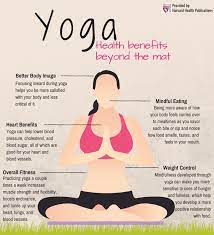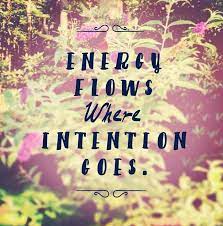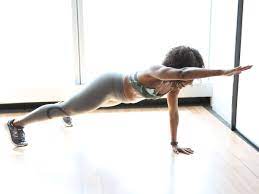Maximizing Your Yoga Performance: Secrets to Success
Yoga is a great way to improve physical and mental health, but for many, maximizing performance in the practice can be difficult. Whether you’re a beginner or advanced yogi, there are certain techniques and tips that can help you power through your asanas and get the most out of your yoga practice. In this blog post, we’ll cover the secrets to success when it comes to maximizing your yoga performance.
The Benefits of Yoga Practice

Yoga is more than just a form of exercise; it is a practice that can transform your entire being, both physically and mentally. Through regular yoga practice, you can experience a myriad of benefits that can enhance your overall well-being and improve your quality of life.
One of the most significant benefits of yoga practice is its ability to reduce stress and anxiety. Yoga involves controlled breathing, which has been shown to calm the mind and reduce tension in the body. By focusing on the breath, you can quiet your mind and enter a state of relaxation that can help reduce stress levels and promote mental clarity.
Another benefit of yoga practice is increased flexibility and strength. Many yoga poses involve stretching and strengthening the muscles, which can improve your range of motion and increase your overall physical strength. Additionally, yoga can help improve your posture and alignment, which can reduce the risk of injury and chronic pain.
Yoga practice can also help improve your balance and stability. Many yoga poses require balance and coordination, which can strengthen the muscles that support your joints and improve your overall balance and stability. This can be particularly beneficial for older adults or those with mobility issues.
In addition to physical benefits, yoga practice can also improve your mental clarity and focus. By practicing mindfulness and concentration techniques, you can learn to quiet your mind and improve your ability to concentrate. This can have a positive impact on all aspects of your life, including your work, relationships, and personal goals.
Overall, there are countless benefits to incorporating yoga into your daily routine. Whether you are looking to reduce stress, improve your physical fitness, or enhance your mental clarity, yoga practice can provide a wealth of benefits that can improve your quality of life in countless ways.
Setting Intentions for Your Practice

When it comes to maximizing your yoga performance, one of the key things you can do is to set intentions for your practice. Intentions are essentially the goals you have for your practice – they help to guide your focus and ensure that you get the most out of each session.
To begin setting intentions for your practice, take a few moments before you start to think about what you want to achieve during your yoga session. This could be anything from increasing your flexibility to reducing stress and anxiety, or even simply feeling more present and mindful in the moment.
Once you have a clear idea of your intentions, try to hold onto them throughout your practice. Keep reminding yourself of why you’re there, and how you want to feel both physically and mentally as a result of your practice.
You might also find it helpful to write down your intentions before you start. This can serve as a powerful reminder of what you’re working towards, and help to keep you focused and motivated throughout your session.
Ultimately, setting intentions for your practice can be a powerful tool for enhancing your yoga performance. By keeping your goals in mind, you can work towards achieving your desired outcomes and enjoying all the physical and mental benefits that come with regular yoga practice.
Breathing Techniques to Enhance Performance

In yoga, breathing is just as important as the physical poses themselves. Proper breathing techniques can help you move more deeply into poses, increase your endurance, and even calm your mind during stressful situations. Here are some breathing techniques to enhance your yoga practice:
- Ujjayi Breath: Also known as ocean breath, ujjayi breath involves breathing in and out through your nose while slightly constricting the back of your throat, creating a gentle sound like the waves of the ocean. This technique can help calm the mind and increase your endurance during physical exertion.
- Kapalbhati Breath: This breathing technique involves forceful exhalations through your nose, followed by passive inhalations. Kapalbhati breath can help activate your core muscles and improve digestion.
- Alternate Nostril Breathing: In this technique, you inhale through one nostril and exhale through the other, then switch sides. This technique can help balance your energy levels and calm your mind.
- Breath Retention: This technique involves inhaling deeply and holding your breath for a few seconds before exhaling. Breath retention can help improve lung capacity and increase your overall focus.
Remember, the goal of breathing techniques in yoga is to connect your breath with your movement and bring a deeper sense of awareness to your practice. Don’t be afraid to experiment with different techniques and find what works best for you. With consistent practice, you’ll notice improvements in your performance both on and off the mat.
Incorporating Strength and Balance Training

While yoga is primarily a practice of flexibility and relaxation, incorporating strength and balance training into your routine can take your practice to the next level. Strengthening your muscles will help you hold poses for longer and prevent injuries, while balance training will improve your overall stability and prevent falls.
To incorporate strength training into your practice, try incorporating poses like plank, chaturanga, and warrior series into your routine. These poses engage your core, arms, and legs, building strength and endurance in these muscle groups. As you progress, you can challenge yourself by adding in more advanced poses like arm balances and inversions.
Balance training can be incorporated into your practice through poses like tree pose, eagle pose, and dancer’s pose. These poses require focus and concentration, improving your overall stability and preventing falls. Practicing balance poses also strengthens the muscles in your feet and ankles, which can improve your overall balance in daily life.
Remember to always listen to your body and avoid pushing yourself too hard. If a pose feels too challenging, modify it or skip it altogether. As with any form of exercise, it’s important to start slow and gradually build up your strength and balance over time.
Incorporating strength and balance training into your yoga practice can have a significant impact on your overall performance. Not only will you be able to hold poses for longer and prevent injuries, but you’ll also feel more grounded and centered in your practice. So go ahead and challenge yourself – you might be surprised at what you’re capable of!
Mindfulness and Focus Techniques

In order to truly enhance your yoga practice, it’s important to cultivate mindfulness and focus on your mat. By being present in the moment and paying attention to your breath and body, you can deepen your practice and achieve greater benefits. Here are a few mindfulness and focus techniques to try:
- Dristhi: Dristhi is the practice of focused gazing during yoga poses. By directing your gaze to a specific point, you can improve your balance, concentration, and mental clarity. Experiment with using dristhi during standing poses, seated poses, and inversions.
- Mantra: Mantras are sacred sounds or phrases that can be repeated to aid in meditation and focus. Incorporating a mantra into your practice can help you stay present and centered. Try chanting “om” or “so hum” during your practice.
- Visualization: Visualization is a powerful tool for cultivating focus and intention. Before beginning your practice, take a few moments to visualize yourself moving through the poses with ease and grace. Envision yourself feeling strong, calm, and centered.
- Body Scan: During your practice, take a few moments to do a body scan. Close your eyes and scan through each part of your body, noticing any tension or areas of tightness. Breathe into those areas and release any tension or stress.
By incorporating these mindfulness and focus techniques into your practice, you’ll be able to deepen your connection to your body and mind. With time and practice, you’ll find that you’re able to power through your asanas with greater ease and grace.
Restorative Yoga and Recovery Practices

As much as we push ourselves to power through our yoga practice, it is important to give our bodies time to rest and recover. This is where restorative yoga and recovery practices come in.
Restorative yoga involves holding gentle poses for longer periods of time with the support of props such as blankets, bolsters, and blocks. This allows for deeper relaxation and helps to reduce stress and tension in the body.
Incorporating restorative yoga into your practice can help improve flexibility and range of motion, as well as promote better sleep and digestion. It can also be a great way to manage pain and reduce inflammation in the body.
Other recovery practices to consider include foam rolling, stretching, and self-massage. Foam rolling can help release tight muscles and improve circulation, while stretching and self-massage can help prevent injury and increase flexibility.
It is important to listen to your body and give yourself the time and space you need to recover. Pushing yourself too hard can lead to burnout and injury, so make sure to balance your intense practices with restorative and recovery practices.
Remember, the journey of yoga is not about perfection or pushing yourself beyond your limits, but rather about listening to your body and finding balance in both strength and relaxation. By incorporating restorative yoga and recovery practices into your routine, you can enhance your overall yoga practice and take your performance to the next level.
Nourishing Your Body with Proper Nutrition

While physical practice is crucial to mastering your yoga skills, your body’s nutritional needs are equally important. What you eat plays a critical role in your overall health and energy levels. When you combine the benefits of a nutritious diet with the practice of yoga, you create a powerful synergy that can transform your performance and wellness.
Start by choosing foods that fuel your body and provide long-lasting energy. Consider incorporating healthy carbohydrates like fruits, vegetables, and whole grains into your diet. These foods provide your body with sustained energy, which is essential during long yoga sessions.
Protein is also a critical component of a healthy diet. As you challenge your muscles through various asanas, you’ll need adequate protein to repair and rebuild them. Good sources of protein include beans, nuts, seeds, tofu, and lean meats.
Don’t forget to stay hydrated by drinking plenty of water. During your yoga practice, you may find that you sweat a lot, so be sure to replenish fluids lost through perspiration.
Additionally, certain foods and supplements can aid in your yoga performance. For example, omega-3 fatty acids found in fish or flaxseed oil have anti-inflammatory properties that can help reduce soreness and inflammation in your body. Amino acid supplements like BCAAs (branched-chain amino acids) can also help speed up recovery and reduce muscle soreness.
Incorporating these nutritional guidelines into your lifestyle can significantly enhance your yoga practice. By eating healthy and providing your body with the necessary nutrients, you’ll be able to push your limits and take your practice to the next level.
Importance of Consistency in Practice

Yoga is not a one-time deal; it is a lifestyle. The more you practice, the more your body becomes accustomed to the movements, and the easier it becomes. Consistency in your practice is key to unlocking the full benefits of yoga.
When you first start practicing yoga, you may find it difficult to hold poses, balance, and breathe in sync. However, as you practice more regularly, you’ll start to notice your flexibility and strength improving. Additionally, consistent yoga practice has been known to reduce stress, improve cardiovascular health, and even boost immune function.
Consistency doesn’t mean practicing every single day, but it does mean making an effort to practice at least a few times per week. When you make it a habit, it becomes easier to maintain. Whether you prefer to attend a yoga class, practice at home, or a combination of both, it’s important to establish a routine that works for you and stick to it.
Furthermore, consistency can also help you overcome setbacks and injuries. If you’re recovering from an injury, maintaining a consistent yoga practice can help speed up the recovery process by improving circulation, reducing inflammation, and strengthening the muscles around the injured area.

